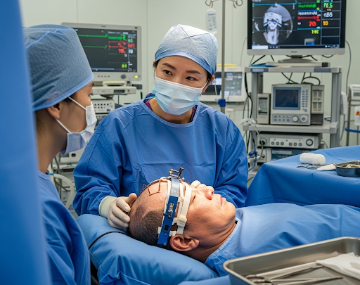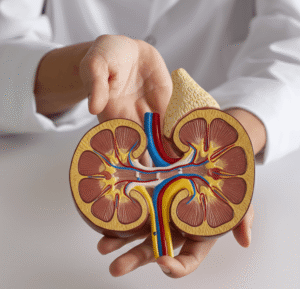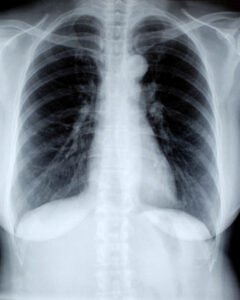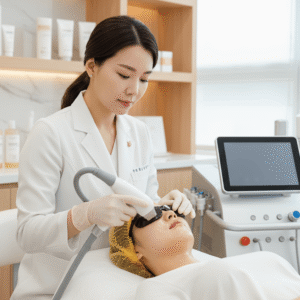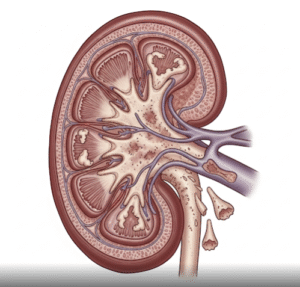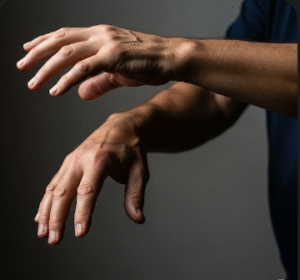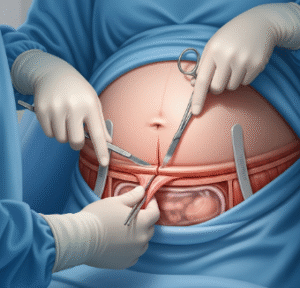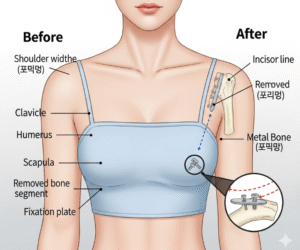Overview
Awake craniotomy is a neurosurgical procedure performed while the patient is awake for part or all of the surgery. This approach allows surgeons to monitor brain function in real-time, ensuring that critical areas responsible for speech, movement, and sensation are preserved during tumor removal, epilepsy surgery, or brain lesion treatment.
In Korea, awake craniotomy is performed in leading neurosurgical centers using advanced anesthesia, intraoperative brain mapping, and monitoring technologies. The procedure maximizes safety and functional preservation while effectively removing abnormal brain tissue.
What is Awake Craniotomy?
Awake craniotomy is a surgical technique where the patient remains conscious during brain surgery, usually after the skull has been opened under local anesthesia combined with sedation.
Indications include:
- Removal of brain tumors near eloquent areas (speech, motor, or sensory regions)
- Surgery for drug-resistant epilepsy
- Resection of vascular malformations or lesions near critical brain areas
Key points:
- Enables real-time assessment of neurological function
- Reduces the risk of postoperative deficits in speech or movement
- Requires specialized anesthetic and surgical expertise
- Typically performed in adults and selected pediatric patients
What are the benefits?
- ✅ Preserves critical brain functions (speech, motor, sensory)
- ✅ Improves surgical precision and tumor removal effectiveness
- ✅ Minimizes risk of permanent neurological deficits
- ✅ Shorter recovery and improved functional outcomes
- ✅ In Korea, highly experienced neurosurgeons combine awake craniotomy with intraoperative mapping and imaging
- ✅ Offers better quality of life post-surgery compared to traditional craniotomy for lesions in eloquent areas
Procedure Details
1) How should I prepare for Awake Craniotomy?
- ➤ Preoperative evaluation including MRI, fMRI, and sometimes DTI tractography
- ➤ Detailed neurological and cognitive assessment
- ➤ Discuss medications, allergies, past surgeries, and medical conditions
- ➤ Fasting instructions prior to surgery
- ➤ Preoperative counseling about the awake phases, communication, and potential sensations
2) What happens during the procedure Awake Craniotomy?
- ✅ Patient sedated initially for incision and skull opening
- ✅ Local anesthetic applied to scalp, skull, and underlying tissues
- ✅ Once brain exposure is achieved, patient woken up for functional testing
- ✅ Surgeons perform cortical mapping using direct stimulation to identify speech, motor, or sensory areas
- ✅ Tumor or lesion removed while monitoring patient responses
- ✅ Procedure duration: 3–6 hours depending on lesion size and complexity
3) What happens after Awake Craniotomy?
- ➤ Patient monitored in post-anesthesia care unit for vital signs and neurological function
- ➤ Pain managed with analgesics
- ➤ Early neurological and cognitive assessments to detect any deficits
- ➤ Gradual mobilization encouraged
- ➤ Follow-up imaging and consultations to monitor recovery and detect residual tumor
Risks / Benefits
Potential Risks:
- ➤ Seizures during brain stimulation
- ➤ Temporary speech, motor, or sensory deficits
- ➤ Infection or bleeding at the surgical site
- ➤ Rare anesthesia complications
- ➤ Swelling or pain at incision site
Benefits:
- ✅ Allows maximal safe tumor or lesion resection
- ✅ Minimizes risk of permanent neurological deficits
- ✅ Enhances precision of surgery in eloquent brain areas
- ✅ In Korea, combination of advanced intraoperative mapping and imaging ensures safety and optimal outcomes
Recovery and Outlook
- Hospital stay: Typically 5–7 days, depending on complexity
- Activity: Gradual return to daily activities; avoid strenuous activity for 4–6 weeks
- Follow-up: Imaging (MRI) to assess extent of resection and monitor for recurrence
- Pain management: Analgesics for mild post-operative pain
- Long-term outcome: Most patients experience good neurological function preservation and improved quality of life
When To Call the Doctor
- ➤ Severe headache, swelling, or bleeding at the incision site
- ➤ New weakness, numbness, or speech difficulties
- ➤ Fever, redness, or signs of infection
- ➤ Seizure activity post-surgery
- ➤ Any unusual neurological or systemic symptoms
Best Korea Option / Process
- ✅ Korea offers state-of-the-art neurosurgical centers with experience in awake craniotomy
- ✅ Uses intraoperative brain mapping, advanced imaging, and anesthesia protocols
- ✅ Postoperative care includes neurological monitoring, rehabilitation, and follow-up imaging
- ✅ International patients benefit from VIP services, English-speaking staff, and coordinated care
- ✅ Ensures maximal safe resection, preservation of function, and improved patient outcomes

